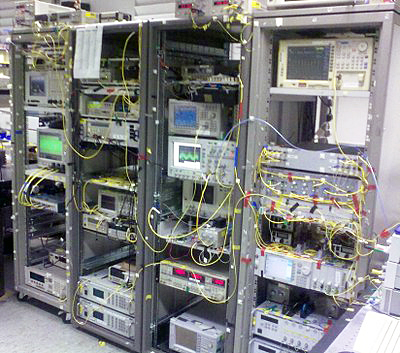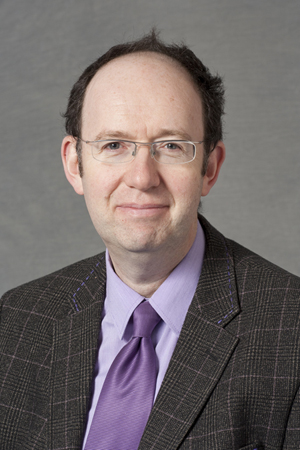19 Mar 2012
Three projects, two photonics, one IT, designed to meet ballooning demand for optical network automation and boost data capacity.

UCL Engineering: Communications focus.
Professor Dave Delpy, Chief Executive of the EPSRC said: “The funded projects are all extremely strong bids for transformative and world-leading research programs. They range from optical and wireless communication technologies through to software engineering and computer science and exemplify the breadth and diversity of the ICT research that EPSRC supports.”
The Dean of UCL Engineering, Professor Anthony Finkelstein, said: “UCL Engineering is excited by the scientific challenges inherent in these important programs, and pleased that the EPSRC has recognized us as a key player delivering innovation to the UK and the global economy. Our unique capabilities spanning research and knowledge transfer, from optics through networks to software services, allow us to tackle some of the large scale technology challenges that face the digital economy, and meet our mission to Change the World.”
Three projectsWithin the Department of Electronic and Electrical Engineering, the Optical Networks Group will receive a £4.75 million EPSRC program grant to develop a new generation of high-capacity optical communication systems and networks, with the aim of breaking previously imposed data transmission limits.
Simultaneously the Department’s Photonics group will work on wireless technology for the 21st century, developing ways to use the under-exploited terahertz (THz) frequency band, funded by a £6.60 million grant.
CREST, the Centre for Research on Evolution, Search and Testing within UCL’s Computer Science department, will embark on a new way to design software, using adaptive techniques and automation where possible to speed software development, with the third program grant, worth £6.80 million.

Dean of UCL Engineering, Professor Anthony Finkelstein
Developments in optical fiber transmission have enabled vast improvements in telecommunications and the Internet, that now underpin almost every aspect of economy and society. Virtually all data (whether from phones, computers or mobile devices) are carried over optical fibers.
However, the UK’s current infrastructure faces strain from the demand for ever-higher bandwidth – it is predicted that by 2020 the rate of traffic growth will be ten times higher than growth of capacity to handle it. The Optical Network Group within UCL Engineering, led by Professor Polina Bayvel, have been awarded this EPSRC program grant to unlock more optical communications capacity and enable growth to continue.
The Optical Network Group within UCL Engineering, led by Prof Polina Bayvel, have been awarded this EPSRC program grant UNLOC, to unlock more optical communications capacity, and enable growth to continue.
With their collaborators in Aston University, they will develop a new generation of optical communication systems and networks through the combination of advanced digital signal processing techniques, novel modulation formats, and coding, explicitly designed to work with the nonlinear properties of optical fibers.
Some limits on data transmission were thought to be fundamental, but by combining theoretical and experimental approaches, the UCL-Aston team hopes that they can be broken. This will maximize optical fiber capacity for both the existing and any future fiber infrastructure, world-wide.
Bayvel told optics.org, “In our project, we are addressing how to achieve more capacity in an optical fiber. It’s well known that data demands are growing at 40% year on year, generated by video and other new services. The capacity available to carry that data is increasing much more slowly and at current forecasts, optical networks will run out of capacity by 2020.”
“We are planning to design novel systems that take advantage of the nonlinearities in conventional optical fibers to maximize their data capacity, such as using modulation formats matched to the nonlinearities of the channel and through advanced digital signal processing – all to be based on existing infrastructure.”
“Furthermore there will be a number of programs to develop new fiber structures. For example, it has always been anathema to transmit data on multimode fiber. But new digital signal processing and coherent optical detection techniques mean that it may be possible to use multimode fiber to transmit data over very long distances because it may be possible to undo the modal noise.
”So UCL will be looking at new modal formats, new coding methods and new DSP in recognition of the opportunities provided by optical nonlinearities in the fiber, both for current fiber designs and newer fiber types such as hollow core.”
Besides the other academic partners, there are several key industry players in communications involved with the UCL projects, both on the technology and content sides. They include BT, France Telecom, Deutsche Telekom, XTera Communications, Huawei, Oclaro and Ciena. UCL is also working closely with the University of Southampton, which is noted for its fiber research and development projects.”
Gold at the end of the spectrum
The terahertz frequency region is the last unexploited part of the electromagnetic spectrum. Lying between radio and optical frequencies, the bandwidth available is around 30 times greater than the entire allocated radio spectrum. The main reason why this resource has been so little used is the complexity, bulk, high power consumption and lack of coherence of current terahertz technologies.
The program will bring together the world-leading teams from the University of Cambridge, University of Leeds, UCL and the London Centre for Nanotechnology that have pioneered THz quantum cascade lasers, microwave photonics and THz quantum state control to open up the THz spectrum for widespread scientific and commercial application, through the use, for the first time, of photonics-enabled coherent techniques.
The program aims to maintain this pre-eminence and exploit it to establish UK leadership in wireless communications, with a thousand-fold enhancement in bandwidth available to untethered devices; in quantum information processing with optically controlled gates in silicon; and in advanced imaging technology, especially for biomedicine.
Making software make software
Computer systems have automated many tasks, eliminating mindless repetition and vastly speeding up many processes. However, developing software itself remains slow and error-prone, wasting developers’ time and preventing rapid adjustment to changing needs.Funded by an EPSRC grant of £6.65 million, CREST, the Centre for Research on Evolution Search and Testing at UCL Engineering, led by Professor Mark Harman, will work to address this by developing a radical new technique of Dynamic Adaptive Automated Software Engineering (DAASE).
DAASE will develop theory, algorithms, methods, techniques and tools for adaptive software engineering, with the aim of producing systems that self-monitor and evolve to handle dynamically changing development processes and dynamically changing operating environments. It will draw on expertise from the universities of York, Birmingham and Stirling.
Software development is a problem with global scope. As well as personal frustrations with the glacial pace of software adaptation, the ubiquity of software in our daily lives means that its quality directly affects many crucial industries – touching finance, security, and supply management, to name a few. Rapid, flexible development techniques are critical to respond to the changing world around us.
Program grants are a flexible mechanism to provide funding to world-leading research groups to address significant major research challenges. They are intended to support a suite of related research activities focusing on one strategic research theme. Although it is expected that most proposals will be interdisciplinary and collaborative in nature, they can address key challenges in a single discipline.
The UK’s ICT sector is the largest in Europe and expected to grow to over £29 billion by 2012. The combined creative industries and ICT sectors employ 3 million people (UK Trade and Investment).
About the Author
Matthew Peach is a contributing editor to optics.org
| © 2024 SPIE Europe |
|